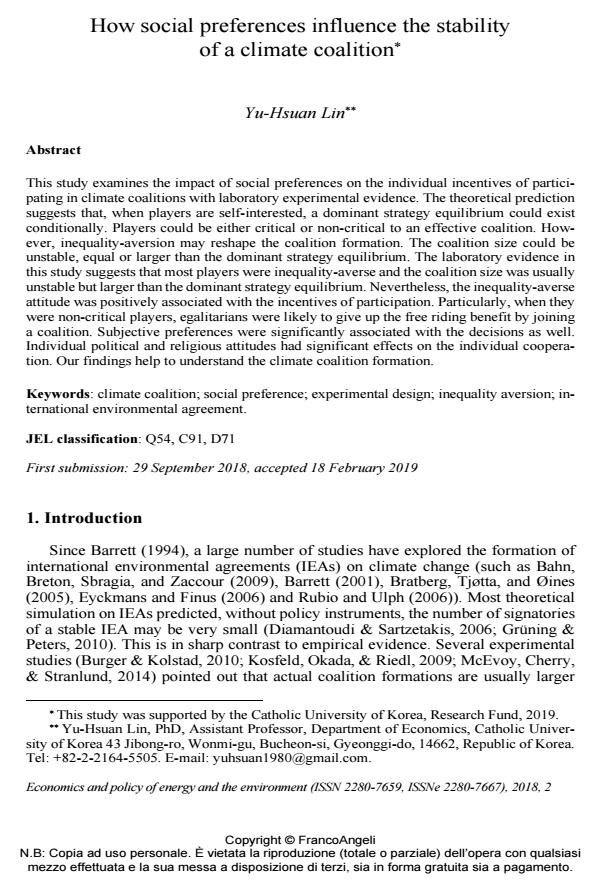How social preferences influence the stability of a climate coalition
Journal title ECONOMICS AND POLICY OF ENERGY AND THE ENVIRONMENT
Author/s Yu-Hsuan Lin
Publishing Year 2019 Issue 2018/2
Language English Pages 16 P. 151-166 File size 244 KB
DOI 10.3280/EFE2018-002008
DOI is like a bar code for intellectual property: to have more infomation
click here
Below, you can see the article first page
If you want to buy this article in PDF format, you can do it, following the instructions to buy download credits

FrancoAngeli is member of Publishers International Linking Association, Inc (PILA), a not-for-profit association which run the CrossRef service enabling links to and from online scholarly content.
This study examines the impact of social preferences on the individual incentives of participating in climate coalitions with laboratory experimental evidence. The theoretical prediction suggests that, when players are self-interested, a dominant strategy equilibrium could exist conditionally. Players could be either critical or non-critical to an effective coalition. However, inequality-aversion may reshape the coalition formation. The coalition size could be unstable, equal or larger than the dominant strategy equilibrium. The laboratory evidence in this study suggests that most players were inequality-averse and the coalition size was usually unstable but larger than the dominant strategy equilibrium. Nevertheless, the inequality-averse attitude was positively associated with the incentives of participation. Particularly, when they were non-critical players, egalitarians were likely to give up the free riding benefit by joining a coalition. Subjective preferences were significantly associated with the decisions as well. Individual political and religious attitudes had significant effects on the individual cooperation. Our findings help to understand the climate coalition formation.
Keywords: Climate coalition; social preference; experimental design; inequality aversion; international environmental agreement.
Jel codes: Q54, C91, D71
- Mapping the empirical relationship between environmental performance and social preferences: Evidence from macro data Marco Vincenzi, in ECONOMICS AND POLICY OF ENERGY AND THE ENVIRONMENT 1/2023 pp.85
DOI: 10.3280/EFE2023-001005
Yu-Hsuan Lin, How social preferences influence the stability of a climate coalition in "ECONOMICS AND POLICY OF ENERGY AND THE ENVIRONMENT" 2/2018, pp 151-166, DOI: 10.3280/EFE2018-002008